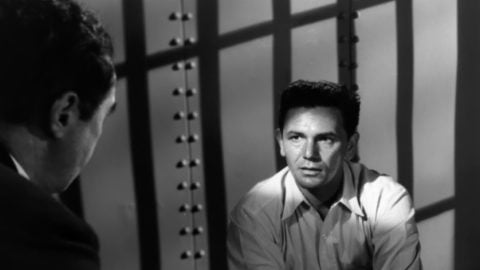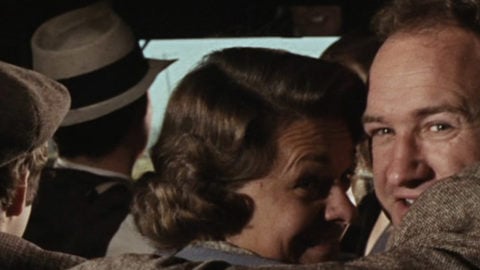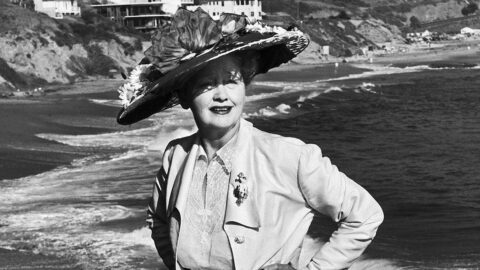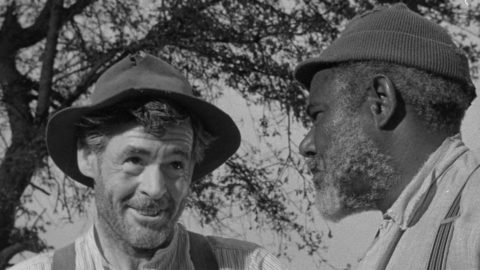TCM Diary: Naked Gun and Slapstick
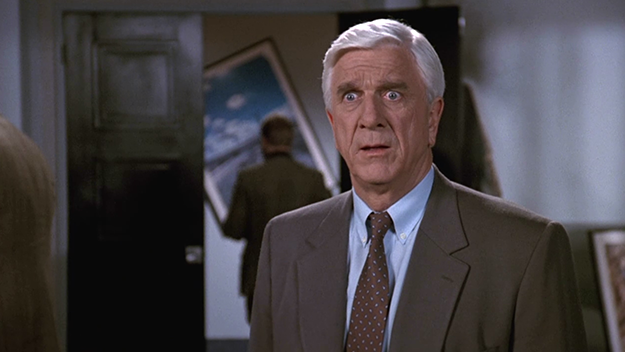
One might raise an eyebrow at the appearance of Naked Gun: From the Files of Police Squad! (1988) in TCM’s survey of slapstick this September. While it became a staple of cable after its theatrical release, this David Zucker–Jim Abrahams–Jerry Zucker (aka “ZAZ”) production is rarely considered a classic alongside Chaplin, Keaton, and Lloyd. Nor is it even ZAZ’s signature feature, which is still Airplane! (1980), a spoof of the Airport franchise and the 1957 film Zero Hour!. And yet Naked Gun successfully amalgamates comedic qualities of some of the greatest American comedies (as well as developing its own).
The surreal, often cartoonishly violent physical humor of Naked Gun—one villain is run over by a bus, a steamroller, and a marching band in rapid succession—can be traced back to the giants of the silent era: Mack Sennett’s anarchic Tillie’s Punctured Romance (1914), Chaplin’s The Circus (1928), and Steamboat Bill Jr. (1928), in which Keaton famously threads the needle of a collapsing house façade. And, as delivered by Leslie Nielsen in an inimitable deadpan, ZAZ’s delirious barrage of puns, non sequiturs, and mangled clichés (“I’m playing hardball, Ludwig—it’s fourth and 15 and you’re looking at a full court press . . .”) has roots in the absurdist verbal interplay of the Marx Brothers. Think of A Night at the Opera (1935): “Say, I just remembered, I came back here looking for somebody. You don’t know who it is, do you?” “It’s a funny thing, it just slipped my mind.”
Though losing some of the detail that made Police Squad!, its television progenitor, such a brilliant send-up of Dragnet and other small-screen police procedurals, Naked Gun is still at its core a parody film, like Top Secret! (a ZAZ production from 1984, targeting war and spy movies), Charles Lane’s Sidewalk Stories (1989; silent cinema), and Adam McKay’s Anchorman: The Ron Burgundy Story (2004; local TV news). Movie parody has died a slow death at the multiplex over the past two decades; now even lowest-common-denominator Jason Friedberg/Aaron Seltzer efforts fail to find audiences. Naked Gun works because it affectionately understands—rather than condescendingly mocks—how truly strange the genre conventions are that we usually take for granted. Central to this strategy is Nielsen, whose early B-movie career made him a natural at nonplussed performances. His Lieutenant Frank Drebin echoes Peter Sellers’s Inspector Clouseau while replacing the latter’s arrogant pomp with humble obliviousness. For example, when Drebin asks himself questions about a case in the voiceover of a noir P.I. (along with the requisite smoky jazz soundtrack) he diffuses their portentousness with a final “And where the hell was I?” The query is genuine—he really doesn’t know where his reflective walk has led him.
In this vein, ZAZ and company owe more than a little to Mel Brooks—perhaps the most influential comic filmmaker of the last 40 years despite his two-decade absence from the director’s chair. Brooks rubbed off on American movie culture in ways both traditional and futuristic: his loving genre-spoofs traffic in old-fashioned Borscht Belt one-liners and fourth-wall destruction, while his scatology and taboo-busting were harbingers of (and role models for) the age of “un-PC” humor. Young Frankenstein (1974), Brooks’s masterpiece, is perhaps the nearest top-to-bottom goofball predecessor to Naked Gun and Top Secret!. Capturing the atmosphere of James Whale’s Frankenstein films by sharing some of their sets in addition to being filmed in gorgeous black-and-white photography, Young Frankenstein also ribs classic Universal horror via perfectly executed Catskills corniness (the “Puttin’ on the Ritz” showstopper) and post–Hayes Code ribaldry (Madeline Kahn’s singing orgasm).
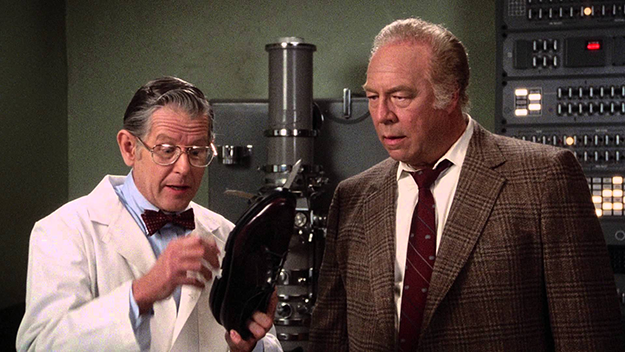
Finally, no discussion of Naked Gun should omit its use of the sight gag. Talk about a lost art: aside from Edgar Wright (Shaun of the Dead, Hot Fuzz), it’s difficult to think of contemporary American (or, generally, English-language) directors who consistently treat film comedy as a visual experience. ZAZ virtually perfected the sight gag as an Easter egg for the eagle-eyed (characters walking around the walls of sets in Naked Gun) or as optical illusion gotcha (my personal favorite from Top Secret!: a man looking through a magnified glass takes it away from his face, revealing an actual enlarged eye). Adam McKay often employs the sight gag with strategic precision for euphoric surprise: in a tight dramatic close-up, Ron Burgundy announces “an urgent and horrifying news story,” which a cut to long shot reveals to be his cannonball leap off a diving board.
Yet all of these jokes testify that some of the best cinematic humor can be traced to when laughs had to be generated through exclusively visual means. Naked Gun’s influences can be found early and often. shorts like Hal Roach and Fred C. Newmeyer’s Harold Lloyd vehicle Number, Please? (1920) poke fun at the casual absurdities of the era’s growing telephone culture through clever compositions. Max Linder’s Seven Years Bad Luck (1921) contains a joke predating and predicting the famous mirror scene in the Marx Brothers’ Duck Soup (1933). And, happily, none of these films consider themselves above the hilariously silly: I’d trade all of the abovementioned jokes in a heartbeat for that one scene of Drebin in Naked Gun, going undercover as a major league umpire—and calling strike three with a moonwalk.
Naked Gun airs September 28 as part of the Turner Classic Movies series Ouch! A Salute to Slapstick. Also airing are Number, Please? (September 7), A Night at the Opera (September 13), and Young Frankenstein (September 21).



